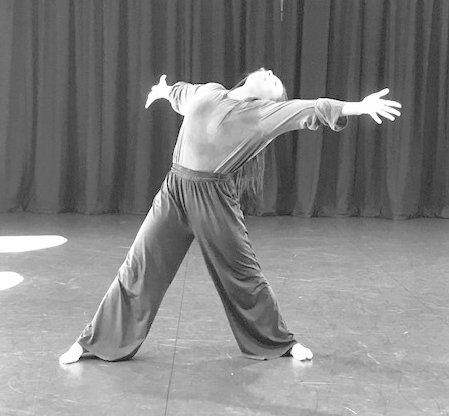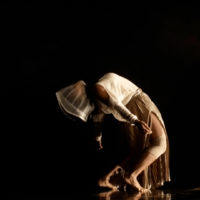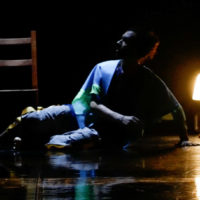IN CONVERSATION – Jamaal Burkmar & Eleesha Drennan
When commissioning for Step Sonic Part 2, Tom put out an open call asking the question ‘how has dance music been influential to you as a choreographer or your choreography journey?’. Dance music has been so influential to Tom, he wanted to explore how music and sound have influenced other choreographers. Jamaal Burkmar and Eleesha Drennan piqued his interest. In these excerpts of conversation (from a post-show chat at Deda, Derby, on the launch night of Step Sonic), Jamaal and Eleesha explain the concepts for their solo commissions, and how music has influenced their work.
Jamaal Burkmar: ESCAPE
A graduate of the Northern School for Contemporary Dance in Leeds, Jamaal’s first creation as a student ‘Ocean’ proved successful with audiences and was commissioned for VERVE. Upon graduating, Jamaal became a winner of the much-coveted New Adventures Choreographer Award.
Jamal: I think there was a point during my training when things were over articulated, and it didn’t really feel like you were allowed to use the innate relationship with music and for that to be enough. When I applied to Tom there was a conversation that was happening among the people I graduated with and people in training about the relationship to music and there was a moment when this guy who was making a piece for a grade and he was asking what was the most cringy and over-used music. I think Mozart kept coming up. When I grew up my brother’s a rapper and my sister’s an R&B singer, but I’ve only ever really made to classical and folk music, so I was a little frustrated with myself or frustrated that that was how I was being moulded in the industry a little bit. In the last two years I’ve only really made to music of black origin, so hip hop and R&B, and I’ve done a lot of work in the commercial sector and music videos, so I wanted to get that across as well. So I came into this it had taken me about 5 years to find the right dancer who I wanted to work with and who could also connect with me through that musical response. All the people who I work with now have pretty much the same taste in music. In our first conversations (for Step Sonic), we talked about Janelle Monae…
Tom: As soon as he mentioned Janelle Monae I was like ‘yeah, I want him!’.
Jamaal: Her first three albums were from the perspective of her alter-ego called Cindi Mayweather who’s an android from the year 3000 come back to tell us about the harsh environment of the future. I loved her for it and all of her music is about the othering – of different races, of sexual orientation, on the socio-economic ladder – and all of these different things, and she puts these all together in an android. I really wanted to respond to that in her music.
Eleesha Drennan: Resonance of Air
An award-winning British/Canadian choreographer, recipient of the Sky Academy Arts Scholarship award for the creation of Channel Rose, and awarded first prize for her solo Whiskers at the International Solo Dance Theatre Festival Stuttgart. Previously House Choreographer for NDCW where she worked as performer and choreographer 2004-2013.
Eleesha: In terms of starting point, I really love working with music that has really organic sounds, that come from an organic origin in some way. I also like to introduce really contrasting rhythms and see what the body can then do, and see where that can take us when you put it to a different piece of music. So I decided for this piece to look at echolocation, which bats use at night to orientate themselves, but it’s not something we can usually hear. With a bat detector you can translate that sound into something that’s audible to human range. I was just blown away by how it picks up the sound and how the rhythm changes depending on whether they’re catching a bug or how close they are to something. You couldn’t write that – so unpredictable but purposeful. We do bat surveys because they’re an endangered species, and if they don’t get the right amount of insects into them at night then they won’t survive. So there was something about the urgency and the necessity of these little sounds and the rhythm that they made – I wanted to work with that and build on the idea of sensing the parameters of space using echos. So that was my starting point, and then to think ‘ok, how can I start with these really intricate, detailed rhythms and then build a world that transforms them into something else?’.





